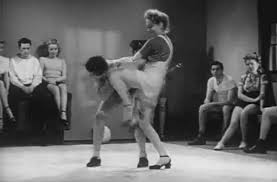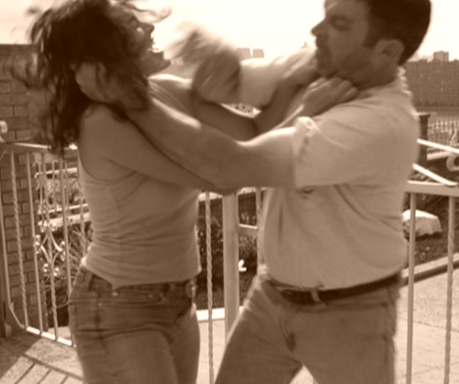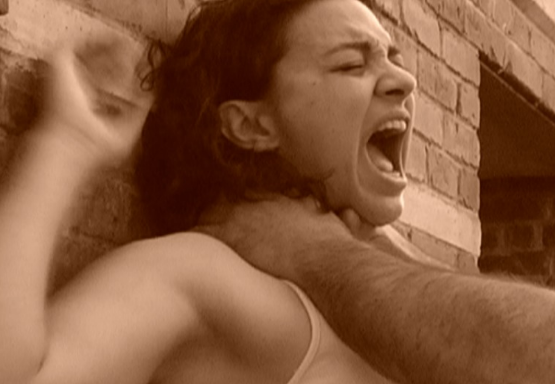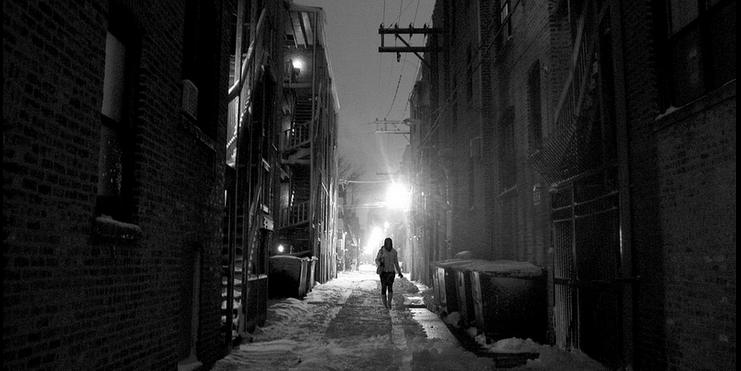In my mind, self-defense should be of interest to anyone and everyone, as it concerns the safety and preservation of our selves and those we love. It makes sense, then, that everyone would want to have some knowledge on the subject, right?
My experience starting a self-defense business providing self-defense workshops has shown that people do not put self-defense as a top priority, at least not until they feel they “need” it (i.e. creepy neighbor, daughter heading off to college, traveling overseas, murderer on the news).
The idea for the business began after I was on a field trip with a group of 4th graders. We were on a city bus when a man approached a group of girls and asked to take pictures of the girls. Thankfully I noticed this interaction and stepped in to stop it. All ended well and the girls were fine, but I could not get the situation out of my head. I knew that these girls were trying to be polite to this guy, despite their obvious discomfort, when what they needed to do is say “no”, get away, and get help.
In my mind, a logical way to deal with the experience was to provide the girls with some basic self-defense and safety information to help them better deal with similar situations they may encounter. With the help of my tae kwon do instructor, I put together a 4 week class for these girls at their school. We focused on prevention, deterrence, and general safety, along with some simple physical techniques. This class was a huge success. The class filled to beyond capacity, plus the girls and their parents wanted more!
This motivated me to start a business teaching safety/self-defense classes to teens and adults. With the results I had at this first class, I didn’t hesitate to pursue additional training and research and continue to move forward with the business idea. My idea for workshops were different than most self-defense classes, as I included a good deal of information/discussion on prevention, education, deterrence and boundary setting, which I hoped would help set me apart and provide a more well-rounded education.
Securing contracts with local community education agencies to put my classes in their catalogs was easy. At the time, I considered this another success. My first community education workshop came and went with mediocre attendance and I had gotten a few private groups set up. As scheduled classes came and went, with attendance of anywhere between 2 and 6 participants, I realized that this may not be as easy as I thought. I attributed this to being new and people just not knowing about the unique workshops I offered.
As I was losing hope in the Fall of 2014, I had some media exposure that I was certain would change things. I was interviewed for a front page article of the major local newspaper, complete with an online video with the interview and demonstration. This exposure was followed by an television appearance on the local morning show. I was swamped with emails soon after, but only booked two private classes out of all of the publicity.
So, why not take a self-defense workshop? I have several theories, but the following quickly come to mind:
“It will never happen to me”. Bad stuff only happens to other people, right?
“The thought of having to use physical self-defense techniques is scary”. In many of my workshops, several participants have said, “I don’t know if I could do that”. First, just the thought of an attack makes them uncomfortable. Second, and this is particularly true of females, it is difficult to consider causing injury to another person, even in self-defense
“I would be uncomfortable practicing any physical techniques in front of others”. An understandable reason, particularly classes that may involve complex techniques and a high level of physical fitness. Self-defense classes should educate on all of the ways we can prevent violent situations and give the confidence that simply putting up a fight and aiming for vital targets may be enough to escape.
“I don’t have time to attend a self-defense workshop”. People’s lives are packed full, from work, kids, home and activities. Self-defense just isn’t a high priority until there is a perceived threat.
“I live in a very safe neighborhood where crime rates are low”. Living in a small city in the Midwest where people tend to leave their doors unlocked overnight, I hear this on a regular basis. Safety is an illusion. There is always risk, whether it is violent crime, street harassment, rape, domestic violence, or bullying.
For a time, I tried to address some of these theories in an attempt to get more business. I made workshop times and locations convenient. Workshops were marketed as educational, with a focus on prevention, targeted at all levels of fitness. But I always refused to “sell” self-defense workshops by using scare tactics and play on people’s fear.
When the danger of violence seems near or is more visible (i.e. the news, college sexual assaults) is the time when people think of self-defense as a priority. Parents of female high school seniors heading off to college is a great example, in my experience. In July and August, I had parents calling me with fear and a bit of panic in their voices as they wanted to book last minute workshops for their daughters prior to their departure to campus. Prevention doesn’t seem to be on people’s minds otherwise.
The amount of time I have put into my self-defense venture never did pay when you run the numbers, but I had a strong desire to get the information in my workshops out there to those who wanted it. I thoroughly enjoyed the process and interaction and, in many cases, walked away feeling as if I had made a difference in participants’ lives. On the other hand, in classes that only had a small number of non-participatory attendees, they sucked the life out of me, leaving me exhausted, frustrated and continually questioning how badly I really wanted to continue.
This is the second writing of this article. The first was put together prior to deciding to end the business. That first article ended with “I will just keep on teaching, hoping that word of mouth continues to spread”, blah, blah, blah. The first writing made me think long and hard about what I was doing and if I really wanted to continue. A sense of bitterness came through that made me question everything. When I finally made the decision to walk away, a huge weight was lifted and I knew it was the right decision.
Although the business is coming to an end, I have no regrets. The people I met throughout the process were supportive and provided me with resources that have been invaluable, not only for the self-defense workshops, but also for me personally. My plan is to continue to volunteer on a limited basis, providing information and education on safety and self-defense to larger numbers of people, such as schools and community groups. I still believe self-defense education is essential.









